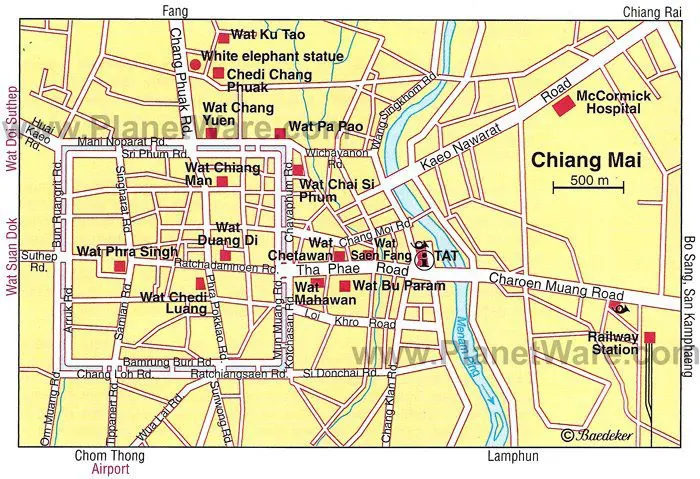Contents
- 1. Wat Phra That Doi Suthep
- 2. Discover Doi Pui Village
- 3. Walk around Doi Inthanon
- 4. Wat Chedi Luang
- 5. The Old City
- 6. Wat Prasingh
- 7. Try Street Food at the Chiang Mai Gate Market
- 8. Get Your Shopping Done at Sunday Walking Street
- 9. End Your Day at the Night Bazaar
- 10. Stop by the Highland People Discovery Museum
- 11. Mingle with Rescued Elephants at Elephant Nature Park
- 12. Explore Bua Thong Sticky Waterfalls
- 13. Relax at Huay Tung Tao
- 14. Art in Paradise, Chiang Mai
- 15. Wat Lok Moli
- Where to Stay in Chiang Mai for Sightseeing
- More Tropical Adventures in Thailand
Author Meagan Drillinger visited Chiang Mai most recently in 2022.
Chiang Mai is essentially Thailand’s second city – the smaller, more relaxed answer to the madness of Bangkok. It was once the capital of the Lanna Kingdom, but now is a major draw for backpackers and travelers of all kinds, not to mention retiring ex-pats and humanitarians.
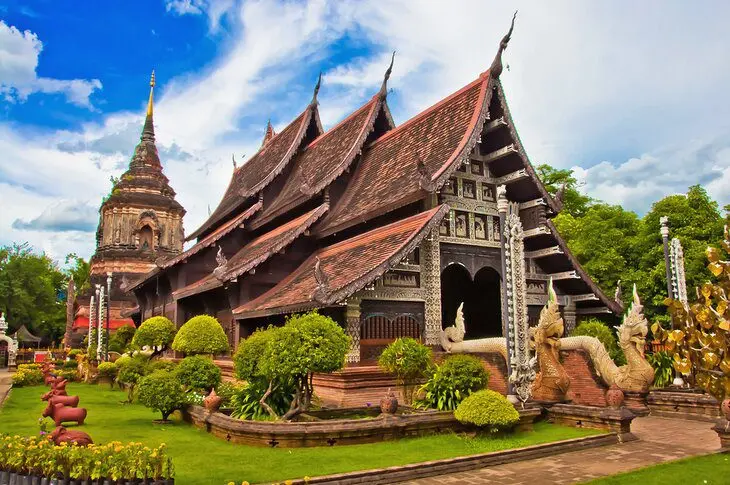
Many who come here return again and again or stay for years when they had meant to stay only a few weeks. There’s an energy in the city that captivates those who visit, whether they seek a trekking adventure or a spiritual awakening as they travel from temple to temple.
The city itself offers plenty of things to do in the way of cooking classes, temple visits, street food, and culture. But beyond its boundaries, you’ll find natural perfection, awe-inspiring animals, and unique communities deep in the mountains. Explore the sights with our list of top attractions in Chiang Mai.
See also: Where to Stay in Chiang Mai
1. Wat Phra That Doi Suthep

This mountaintop temple is a must-see in Chiang Mai. Wat Doi Suthep’s central shrine contains a much-revered seated Buddha and is one of the most popular tourist attractions in the city.
You can reach the temple by hiking up the mountain (a sweaty but surely memorable endeavor), renting a motorbike, or hopping into a songthaew (red trucks that essentially operate as communal cabs). The drive is a short one, so you can do this whole trip in about two hours. Tip: Visiting just before sunset is a special treat, as this is the hour when the monks begin their evening chants.
At the base of the staircase leading up to the temple, you’ll find vendors selling souvenirs, antiques, and snacks. Brace yourself for the climb because the staircase is steep, but the effort is well worth it. Statues of two demons guard the entrance to the temple precinct.
Generally, only two of the six gates leading to the gallery and the chedis are open. The gallery is adorned with statues of Buddha in the Chiang Mai and Sukhothai styles. The temple itself is ornate, with many representations of the Buddha, detailed dragon statues, and elephant carvings. There is also a small museum on the premises.
On a clear day (and most of them are clear unless you’re visiting during the rainy or burning seasons), you can look out over the entire city and spot the chedis atop other wats poking out among the clustered buildings. If you’re wearing shorts, you will be required to put on a sarong-like wrap to cover your legs. It is advised to cover your shoulders and your legs at least past your knees when visiting any temple. There is a small fee to enter the temple complex.
2. Discover Doi Pui Village
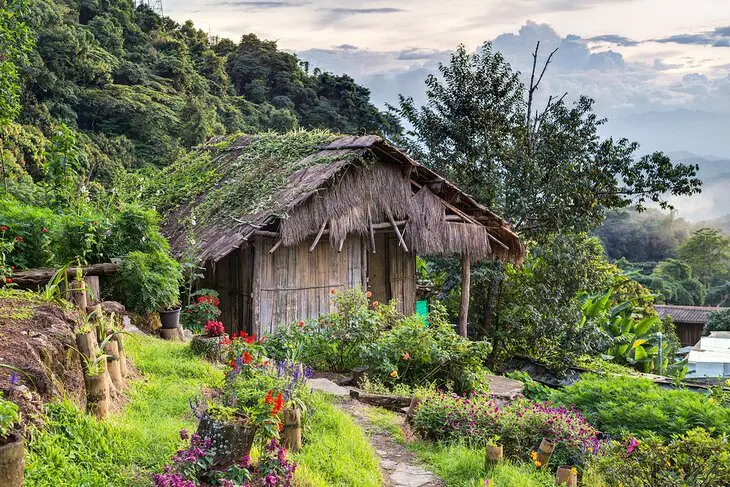
This small Hmong village is admittedly more tourist-oriented than authentic. Yet there is a small exhibit of a traditional hill tribe home and information on the history of the many groups that have settled in the Thai mountains in past generations.
Here, you will find many small shops where you can purchase hand-woven textiles, handmade jewelry, tea, and other goods. You can also explore a large garden with a diverse array of plants and enjoy breathtaking views from the village. Stop for lunch at one of the small restaurants overlooking the greenery below and order a hot bowl of khao soi, Chiang Mai’s most famous dish.
It’s a good idea to add this to your itinerary the same day you visit Doi Suthep since you only need to drive a bit farther into the mountains to reach Doi Pui. Enjoy the ride; it’s a beautiful one.
3. Walk around Doi Inthanon

This is the highest peak in Thailand, and the national park that surrounds it is filled with some of the many natural wonders that make the country such a draw in the first place. You can do some trekking and hike the mountain, or take a more leisurely route around the park.
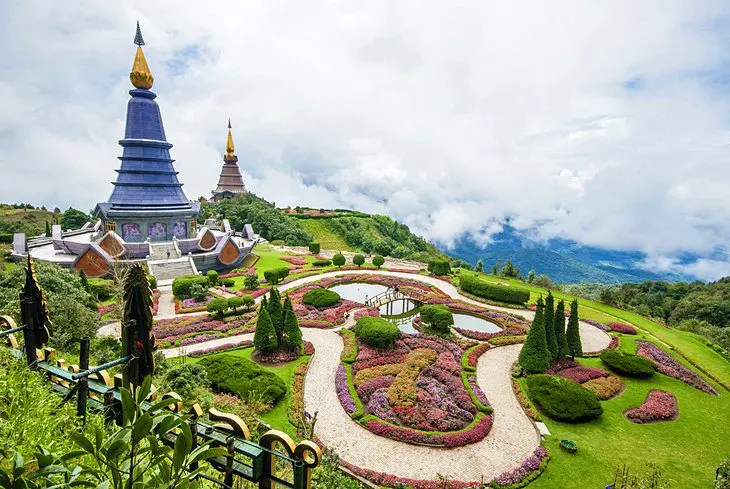
Several waterfalls and a hill tribe village are other attractions, along with two pagodas built to honor King Bhumibol Adulyadej and Queen Sirikit. You’ll want to either hire a driver for the day or rent a motorbike and see the sites on your own, as you won’t be able to make your way through the entire park on foot. But it’s only about a two-hour drive from the city, so if you leave early, you can get in a full and satisfying day on the mountain.
4. Wat Chedi Luang
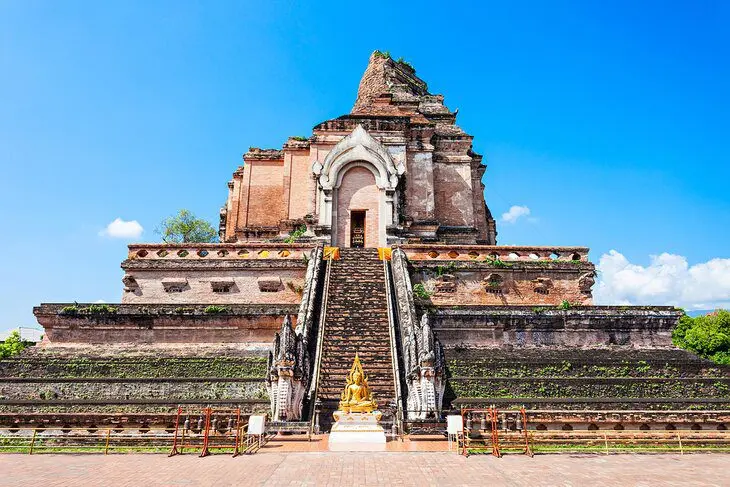
Ruins aren’t exactly a rare sight in Chiang Mai, or in Thailand generally, for that matter. But there’s something about Wat Chedi Luang that is particularly beautiful and haunting. Constructed in 1401, the imposing structure was damaged during an earthquake in 1545. But it remains remarkable today, and you can still see the massive elephant carvings that adorn it.
Beneath a huge gum tree on the left of the entrance to the precinct stands a delightful little temple, the Lak Muang. Built in 1940 on the site of an earlier wooden building, the shrine is the abode of Chiang Mai’s guardian spirit (Lak Muang). According to tradition, if the great tree should fall, disaster will overtake the city. The temple is something to behold at any time of day, but it’s particularly lovely at night, when it is all lit up.
5. The Old City
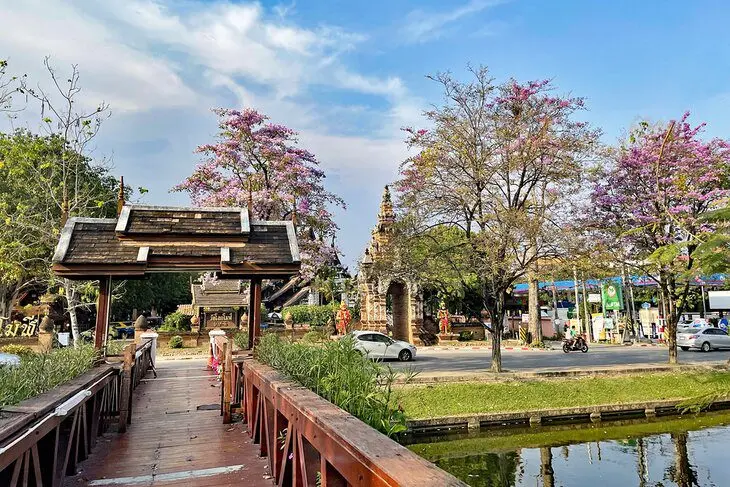
One of the first stops on your visit to Chiang Mai will certainly be the Old City. In fact, this is often where most visitors opt to stay, as it’s fairly walkable and is packed with temples, restaurants, and charming back streets. You’ll recognize the Old City because it is bordered by water channels that resemble a mote. You’ll also see remnants of the old walls.
This was the original site of the city when it was founded as the capital of the Lanna Kingdom. It was founded in the 13th century on the banks of the Ping River.
Today the Old City is highly concentrated with some of the best things to do in Chiang Mai, from the Three Kings Monument to the Chiang Mai Art and Cultural Centre, massage houses, temples, cooking schools, and the Sunday Walking Street Market.
The Old City has so much to see and do that you can fill an entire itinerary just by staying within its boundaries.
6. Wat Prasingh
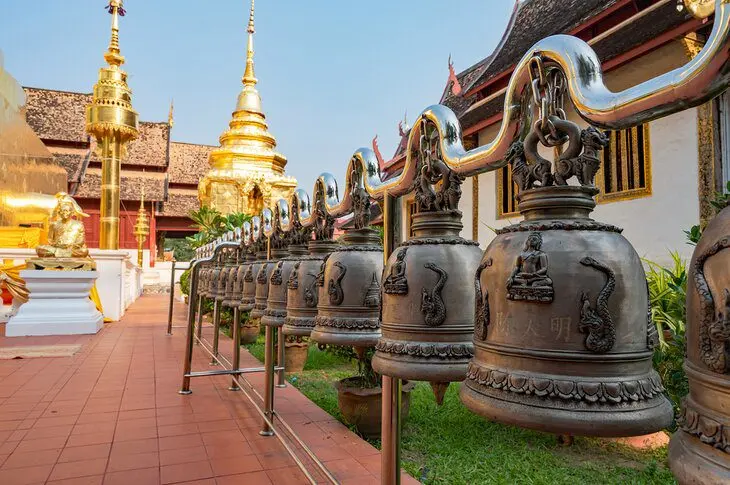
This temple stands at the heart of the Old City. Amid the sois, or alleys, and heavy motorbike traffic, Wat Prasingh rises at the end of Rachadamnoen Road.
It is the largest wat in the city and dates to 1345, when an ancient king built it in his father’s honor. The father’s ashes are still buried on the grounds – but don’t let that spook you from visiting. The decadent structures are impressive, and it’s an especially great place to check out on Sundays.
The wat’s most sacred shrine is a small building called the Phra Viharn Lai Kam, erected during the reign of King San Muang Ma (1385-1401) to house the famous, now sadly headless, Sukhothai-style figure known as the Phra Singh Buddha.
According to tradition, the Buddha, in the familiar “calling the earth to witness” pose, came to Thailand from Ceylon, finding its way first to Ayutthaya and then to Kamphaeng Phet, Chiang Rai, Luang Prabang, and back again to Ayutthaya before, in 1767, arriving in Chiang Mai, where it has been ever since (but there are doubts as to the relic’s authenticity).
Head to Wat Prasingh in the early afternoon, and you’ll have a chance to browse a market on the grounds, perusing creative souvenirs and sampling fresh juices and teas after visiting the temple.
7. Try Street Food at the Chiang Mai Gate Market
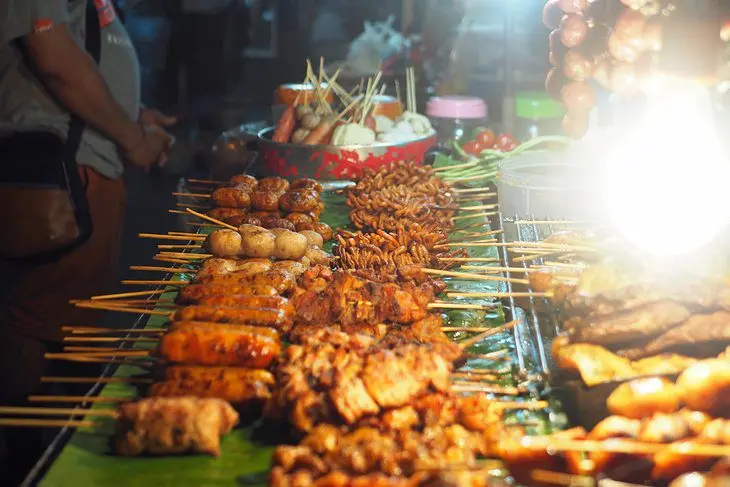
This is the place to find the best street food in Chiang Mai. Every night, vendors set up at the Chiang Mai Gate and sell everything from pad kra pow (spicy meat and basil dish) to the perfect dessert of fresh mango sticky rice topped with coconut milk.
Do yourself a favor and order a smoothie from Mrs Pa. Her stand is located directly across from the 7-Eleven and says Pa’s Smoothies on the sign. Your best bet is to let her mix up a concoction of her devising; you can never go wrong this way. The market is held seven nights a week, but it’s best to go on weeknights since there are fewer vendors on Saturday and Sunday evenings.
8. Get Your Shopping Done at Sunday Walking Street
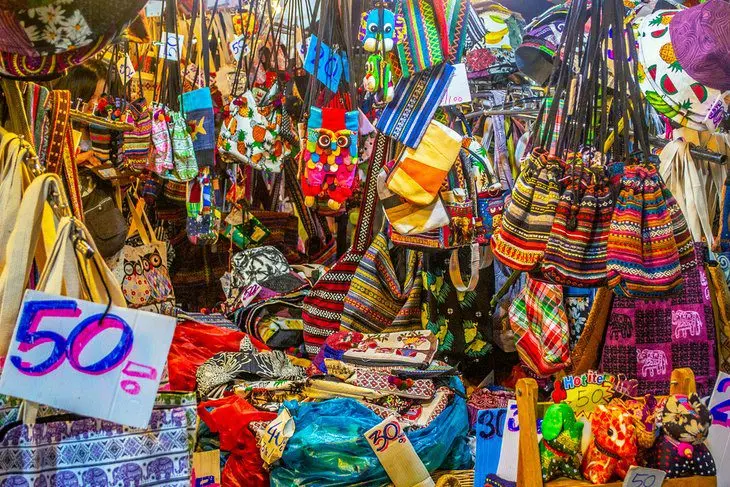
If you’re wondering where to get your street grub on during the weekend, fear not. Chiang Mai has a market for every occasion. The Sunday Walking Street is a must for eating and shopping in Chiang Mai. Go early, though, if you’re not one for crowds.
The main market thoroughfare is Rachadamnoen Road, which begins just behind Thapae Gate, where you’ll find vendors selling handcrafted lamps, dolls, soaps, jewelry, clothes, Christmas ornaments, local handicrafts, and just about every other keepsake you can imagine.
As you reach the end of the first block of Rachadamnoen, you’ll find yourself flanked by two temples. The courtyards of both are filled with food stalls offering a grand mix of pad Thai, Japanese curry, sushi for 15 cents a piece, samosas, fried bananas, and dumplings.
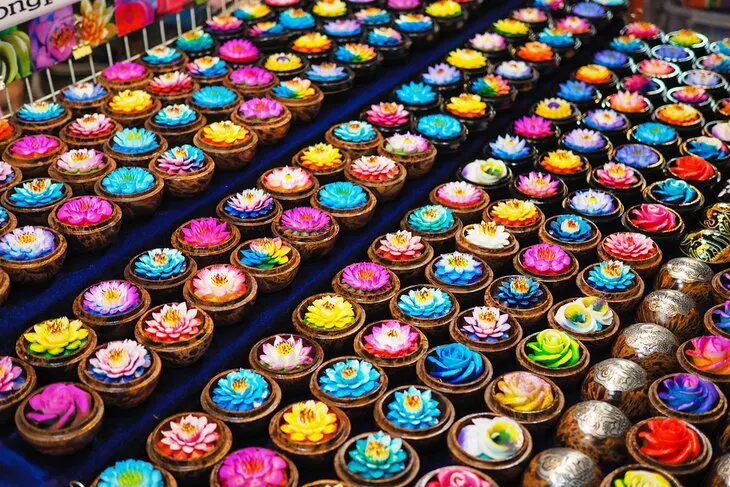
The market stretches the length of the road, and if you’re interested in doing any shopping at all, leave yourself several hours to wander, shop, and eat. Also make sure to be patient, as the throngs can make it slow going when it comes to browsing.
The Saturday Walking Street on Wualai Road is a slightly tamer, and slightly less crowded, version of the Sunday market. You’ll find it just behind the Chiang Mai Gate, and it’s a great place to pick up hand-woven clothing, pillow covers, purses, wallets, and other items sold by members of local hill tribe communities.
9. End Your Day at the Night Bazaar

This is a great spot for shopping if you are prepared to do some haggling. Because the Night Bazaar attracts many tourists, you’ll want to be on your guard against getting ripped off. But there are some great finds here, from clothes and scarves to carvings and housewares.
When you’ve finished shopping, you can take in a Muay Thai boxing fight at the stadium on the premises. Muay Thai fights are a big part of local culture and can add an exciting element to your stay in Chiang Mai. Entrance to the fights is usually between 200 and 400 THB.
Location: Chang Klan Road
10. Stop by the Highland People Discovery Museum
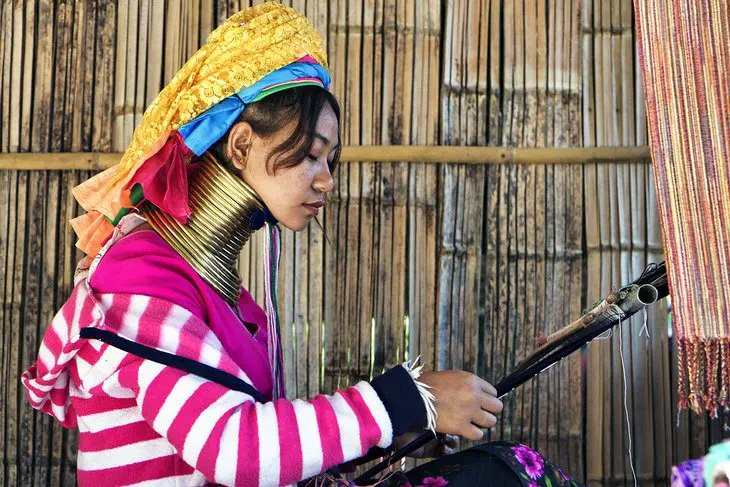
Also known as Chiang Mai’s Tribal Museum, this is the perfect starting point to learn about Thailand’s minority hill tribes before you head out on a hike or visit a tribal village. Northern Thailand is home to several mountain tribes, including the Karen and Hmong (the two largest), as well as smaller ethnic groups, such as the Akha, Lua, and Mien, among others.
This great little ethnographic museum should be at the top of your places to visit if you want to learn more about the local hill tribes and their unique identity and culture. Indoor exhibits cover jewelry and costumes, traditional tribal music, handiworks, and more. There are also photo and video presentations explaining the unique differences among tribes and their difficult history and conflicting relationships with mainstream Thai society.
Because most of the tribes don’t have a written language, the museum plays an important role in preserving and showcasing the history and culture of these ethnic minorities.
Outside the museum building, visitors can explore recreations of tribal huts in a tranquil garden setting. The museum’s gift shop sells authentic handiwork from the various tribes represented here.
Address: Chotana Road Rd., Chang Phueak, Muang Chiang Mai
11. Mingle with Rescued Elephants at Elephant Nature Park
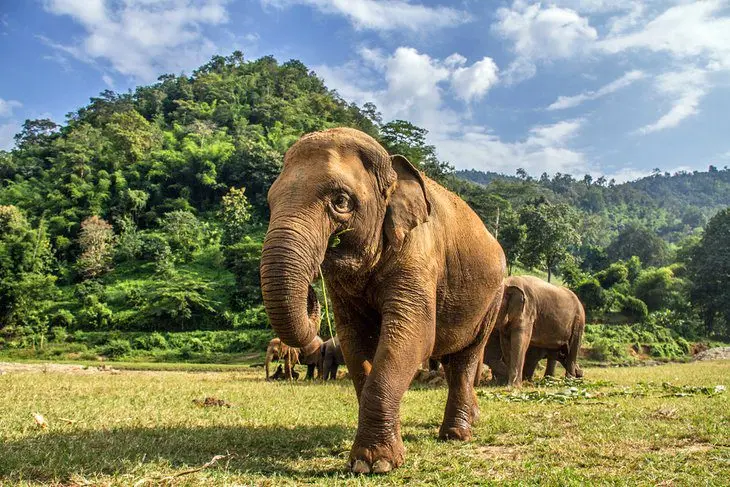
There are many elephant camps around Chiang Mai, but all are not created equal. Many have been criticized as treating the animals poorly and overworking them. Elephant Nature Park is not one of these places.
Visitors are invited to spend a day volunteering with the elephants, feeding them, and bathing them in the river. Most of the elephants are rescues, having suffered as show or labor animals. Once they come to ENP, they are no longer workers and are treated gently and respectfully.
A day spent here is an eye-opening experience, as you get to spend time up close with the elephants and learn about their plight. The cost of volunteering includes transportation and lunch, and the money goes toward maintaining the grounds and providing for the animals. Be sure to book in advance, as the volunteer spots do fill up ahead of time.
12. Explore Bua Thong Sticky Waterfalls
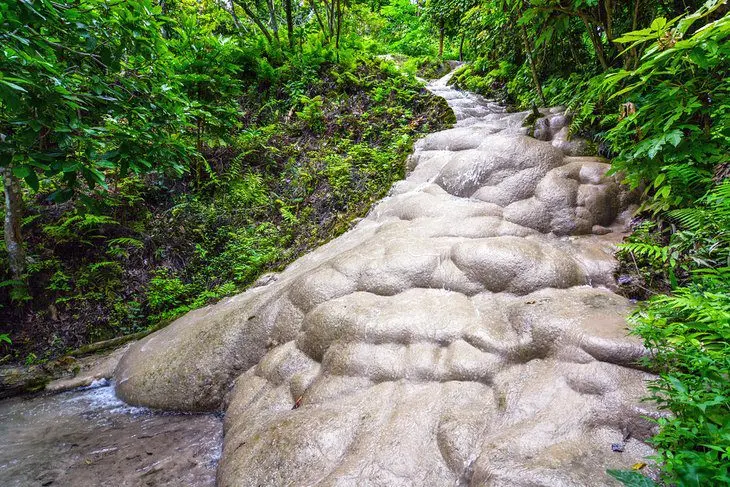
You’ll definitely want to spend a day outside the city checking this place out. The wooded area surrounding the falls is serene and peaceful, but the real draw is the fact that you can walk up the falls. The limestone is “sticky” even as the water runs over it, so you can climb up and down to your heart’s content. It’s a real treat and provides a welcome complement to some of the more traditional tourist activities.
Aim to go on a weekday, since the place is fairly crowded on weekends. For between a few hundred and a thousand Thai baht, you can hire a songthaew or tuk-tuk driver to take you out and back.
13. Relax at Huay Tung Tao

This is a perfect place to laze away a day under the Thai sun, surrounded by hills and with a lake to swim in at your leisure. This reservoir is popular with locals and ex-pats. You can rent a hut on the lake for the equivalent of a few dollars and a huge tube to lounge on in the water for a small fee.
Don’t worry about packing lunch because you can order fresh fish and other dishes from the local kitchens. And it’s only about 10 kilometers from the city, so it makes a perfect day trip. You can hire a driver and negotiate a pickup and drop-off rate. It’s worth purchasing an inexpensive Thai SIM card, so you can give the driver a call if you need to make adjustments to your meeting times.
14. Art in Paradise, Chiang Mai

At Art in Paradise, you can surf a big wave, ride a magic carpet, and stand amid an erupting volcano, or at least look as though you are. This illusion art museum displays 3D art that has an incredibly realistic effect, providing plenty of fantastic photo opportunities.
The collection includes more than 130 photos divided into six different zones, such as the underwater world, wildlife, Ancient Egypt, and European cities. Plan on spending at least two hours here, posing for photos in the scenes of your choice for fun mementos of your visit.
Address: 199/9 Changklan Road, Changklan, Muang Chiang Mai
15. Wat Lok Moli
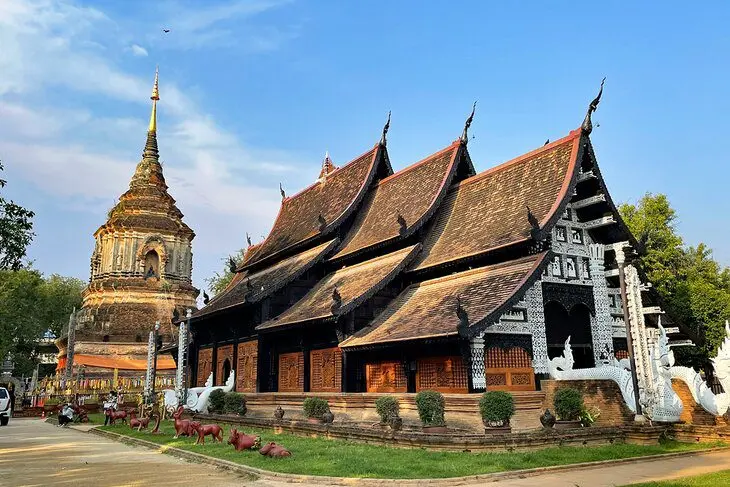
Wat Lok Moli sticks out like a beautiful, amber-colored beacon — especially at sunset when the light hits it just right. It’s next to a gas station, which is a perfect synopsis of Chiang Mai — ancient and modern coexist everywhere here.
The Buddhist Temple sits just outside the Old City, about 400 meters from the Chang Phuak city gate. It dates back at least to the middle of the 14th century and is one of the oldest temples in Chiang Mai.
Of the many temples in the city, this is one of the most beautiful. The most noticeable feature of the temple is the large chedi, which sits behind a temple structure that contains a large Buddha. In fact, one of Lanna’s kings invited monks from what is now Myanmar to Chiang Mai during the 14th century to help spread Buddha’s teachings. While the monks were in Chiang Mai, this is the temple at which they lived. Monks still work on the grounds today.
Inside the chedi are the ashes of many of the kings of the Mengrai dynasty, which ended in the 16th century when Burma invaded Thailand. For many years the temple was abandoned and was recently renovated in the 20th century.
Address: 298/1 Manee Nopparat Rd, ตำบล ศรีภูมิ อำเภอ เมืองเชียงใหม่ Chiang Mai 50200
Where to Stay in Chiang Mai for Sightseeing
If you’re planning to see the top tourist attractions in the city of Chiang Mai, the best place to stay is near the walled Old City, a wonderful place to explore on foot, with its Buddhist temples, bookstores, antique shops, and cafés. Near the Old City’s Tha Phae Gate, the lively Night Bazaar buzzes with activity and the surrounding area is also popular and centrally located for sightseeing.
Hotels in the area of town called Riverside tend to be a little more tranquil but still lie within easy access of all the attractions. Below are some highly rated hotels in convenient locations for sightseeing:
Luxury Hotels:
- Minutes from the Old City and Night Market yet in a tranquil Riverside location, Anantara Chiang Mai Resort is a stylish sanctuary with contemporary Asian accents.
- Also within walking distance to the Old City is the more intimate colonial-style Ping Nakara Boutique Hotel & Spa with charming gingerbread trim.
- The stunning teak buildings of 137 Pillars House Chiang Mai have been lovingly restored and now offer suites with private pools, open-air showers, and vintage tiled verandahs overlooking the lush gardens.
Mid-Range Hotels:
- An excellent mid-range option in the heart of the city is the Golden Bell Hotel next to the Sunday Walking Street market.
- If you’re seeking a little more serenity, a good-value boutique hotel on the outskirts of the city is Rimping Village , a 10-minute walk from the Night Market.
- Shewe Wana Boutique Resort and Spa is a great choice if you want easy access via tuk-tuk to all the top attractions.
Budget Hotels:
- If you’re on a budget, Varada Place offers excellent value within walking distance of the Old City.
- Simple but charming, Amora Resort Tapae Chiangmai is close to many great restaurants and attractions and also offers great views.
- Rustic River Boutique is also centrally located and a short hop from the Night Bazaar.
More Tropical Adventures in Thailand
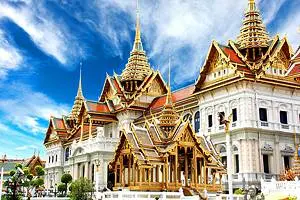
From palaces to picturesque beaches, Thailand is packed with plenty of things to do. Near Chiang Mai, beautiful Mae Hong Son blends both the Thai and Burmese cultures. In Bangkok, you can explore sacred temples and the magnificent Grand Palace, while the old Thai capital of Ayutthaya is a UNESCO World Heritage Site.
Not far from Bangkok lies the bustling beach resort of Pattaya, the historical attractions and national parks of Kanchanaburi, and the Buddhist monuments of Nakhon Pathom.
A short flight from the capital is Surat Thani Province, with the popular islands of Koh Samui and Koh Phangan, and Phuket Island, with plenty of appealing day trips, including Khao Yai National Park.
